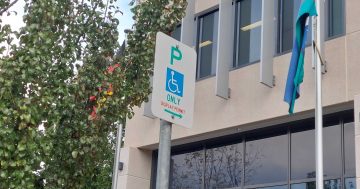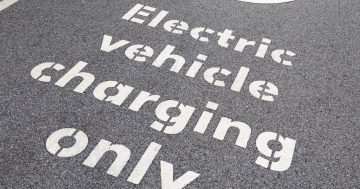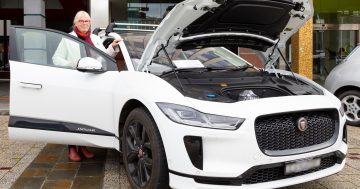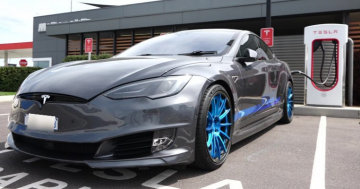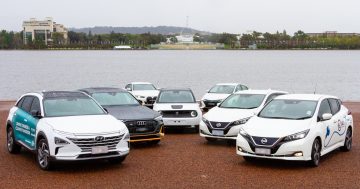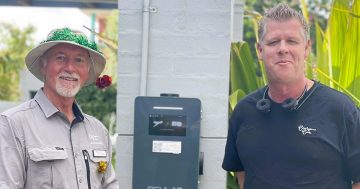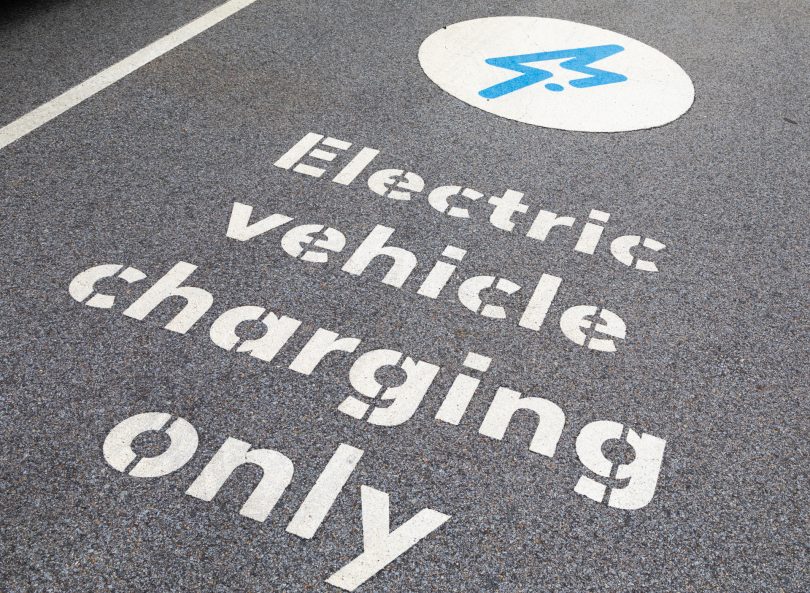
Make sure you’re actually charging to avoid a $128 fine. Photo: Michelle Kroll.
Canberra’s electric vehicle (EV) owners have welcomed new penalties for motorists who park their internal-combustion engine (ICE) cars in the way of charging stations.
It’s dubbed ”ICE-ing” and according to little-known road rules rolled out across Australian states and territories late last year, the fines range from $3200 in Canberra to $369 in Victoria.
Drivers can be fined up to $2200 in NSW and $2875 in Queensland.
Here in the ACT, the laws were covered under the Road Transport Legislation Amendment Bill No. 2, presented by Minister for Transport Chris Steel in 2021.
This largely covered new penalties for using e-scooters while under the influence of alcohol or drugs, but also prohibited “drivers of a vehicle that is not electric-powered from parking in areas designated for electric vehicle charging”.
A spokesperson for the ACT Government says these laws were informed by updates to the national road rules that “recommended all jurisdictions implement parking offences associated with EV charging”.
“Illegally parking in an electric vehicle space has not yet been recognised as a widespread problem in the ACT,” the spokesperson says.
“The new law ensures the ACT is in line with the best-practice national law, particularly when more public electric vehicle charging stations are introduced.”
The rules have been in effect since 2022, and carry an on-the-spot fine of $128 – comparable to a standard parking ticket – while the maximum penalty a court can impose is $3200.
However, EV owners aren’t given a free pass to use charging spots whenever they like either.

An electric Volvo in an EV-only parking bay at IKEA Canberra. Photo: James Coleman.
“There is an offence applicable for owners of electric vehicles who are using a specified electric vehicle space but not plugged in charging their vehicle,” the spokesperson says.
“This fine would be the $128 on-the-spot fine.”
Richard Czumak, chair of the ACT Branch of the Australian Electric Vehicle Association (AEVA), welcomes the new rules, describing them as one case where legislation needed to catch up with technology.
“If you’re driving a petrol car, you wouldn’t park in front of a petrol bowser and then go off for lunch or do the shopping,” he says.
“This is the same. This legislation makes sure EV owners can get the charge they need when they need it.”
Mr Czumak admits it hasn’t been so much a problem in the ACT so far as an “impediment”.
“There are reports of cars parking in front of chargers, especially out near the Canberra Airport, where there are limited parks, and motorists sometimes jump into an empty EV spot because no-one else was there at the time.”
He says EVs parking in charging spots but not charging is even rarer – ”most EV drivers have an understanding of the etiquette” – but the legislation will prompt owners to move on once their car has finished charging. This has the potential to minimise queues for charging spots.
“It improves the efficiency of our use of EV charging infrastructure because people are not ‘camping’, where they’ve finished charging but they stay in the spot,” Mr Czumak says.
“You can help manage demand for the chargers.”












